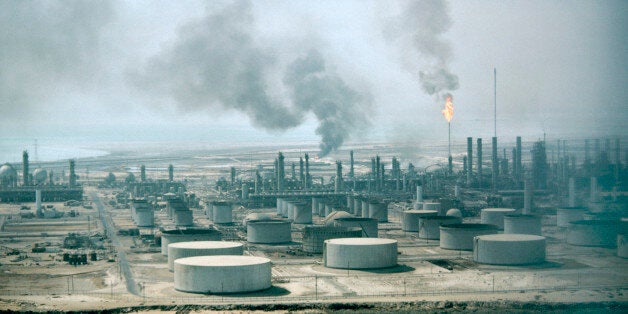
The Middle East and North Africa region is facing a more uncertain future than it has in a generation. Intensified conflicts and a mounting refugee crisis are putting great strain on some countries, while adjusting to an era of sustained low oil prices poses a major challenge to many others. How can these twin challenges be overcome?
The conflicts in Iraq, Syria, Libya and, more recently, Yemen have had horrendous human costs and resulted in widespread destruction of economic infrastructure. Large numbers of people are fleeing their home countries on a scale not seen since the early 1990s. The Syrian and Iraqi conflicts together have displaced more than 12 million people, with many of them escaping to Jordan, Lebanon, and Turkey. Yemeni refugees are fleeing to Djibouti. Libyans to Tunisia and Egypt.
To put this challenge into perspective, for every refugee that reaches the shores of Europe, there are at least 10 others seeking asylum in a neighboring country in the region. Jordan's population has increased by a tenth, Lebanon's by a quarter. It is simply not feasible for these countries to provide the needed support to these refugees without stepped up international help. Providing such help, in a predictable and efficient way, must be a continued high priority for the international community. These countries will also need support to offset the impact of conflicts on trade and tourism, worsening security, and waning investor confidence which further jeopardize their economic prospects and stability.
While conflicts hit the news headlines, persistently low oil prices are as important a factor for shaping the region's economic outlook. Half the countries of the Middle East depend, in varying degrees, on oil for financing their imports and government budgets. So it is not surprising that the halving of oil prices, and the expectation that they are likely to stay at their new lower levels for many years to come, translates into a big economic shock for the region's oil exporters. Already this year, their export revenues will drop by a staggering $360 billion. And based on their current spending plans and the lower oil price projections, without additional spending cuts, these countries face a financing need of nearly $1 trillion over the next five years.
To be sure, many of them can turn to the savings they wisely accumulated during the recent years of high oil prices. And they can borrow from financial markets to ease the process of adjustment. However, these buffers alone will not be adequate and additional difficult budget cuts will be necessary in the coming years.
How can these changes be made in a way that maintains social stability and minimizes the impact on growth? Cutting public spending is not easy for any government but it will be especially challenging for many MENA oil exporters where oil revenues have both fueled economic growth and provided the basis for extensive public sector employment, generous social transfers and very low energy prices. Curbing any of these will touch a sense of entitlement among the general population and the key will be to build awareness and consensus on the need for change through carefully designed measures supported by well targeted communication.
Alongside spending cuts and new taxes, it will be important to encourage and facilitate the work of the private sector in these countries, particularly firms which are helping the economy to diversify away from oil. Some countries, specially the Gulf States, have already made significant progress in this regard. In the UAE, for example, oil now accounts for only a third of exports and a vibrant logistics, trade and tourism business provides a cushion at a time when oil prices have fallen. Others still have more to do to make the business environment more friendly for local and international business.
In a time of entrenched conflicts and historically low oil prices, the challenges for policymakers throughout the region are steep. But that only makes finding the political will to move forward with the right reforms all the more important for economic prosperity of the region and its people.